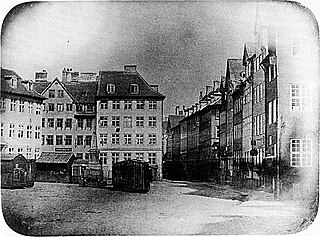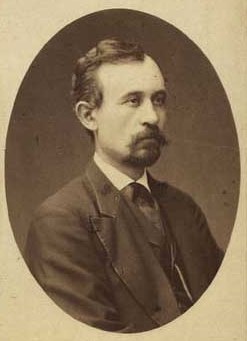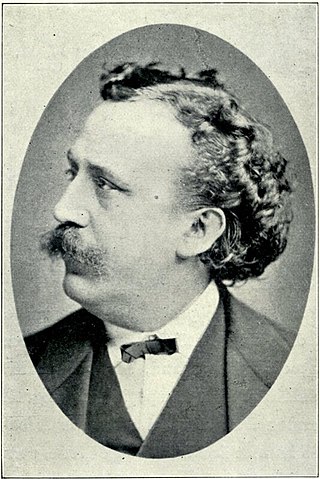Related Research Articles

Jacob Holdt is a Danish photographer, writer and lecturer. His mammoth work, American Pictures, gained international fame in 1977 for its effective photographic revelations about the hardships of America's lower classes.

Folketing elections were held in Denmark on 6 May 1915. In order to make amendments to the constitution, the government called for the dissolution of both the Folketing and the Landsting to allow a new Rigsdag to make the revisions. However, as this was during World War I, no campaigning took place, and 105 of the 115 were uncontested.

Kai Normann Andersen was a Danish composer who wrote film scores and music for stage revues and dramas. He composed songs for over 50 films between 1930 and 1965. In the 1930s and 1940s he dominated Danish film music. He has been called "[o]ne of the most appealing personalities of our time in the light music field". Twelve of his songs have been included in the Danish Culture Canon. Connie Hedegaard and Claus Hagen Petersen list him among the 100 most important Danes of the 20th century.
The Society of the Friends of Peasants was a liberal Danish political society founded on 5 May 1846 by members of the provincial consultative assemblies Johan Christian Drewsen and Balthazar Christensen, with the intent to promote the liberation of the peasantry and equality among the different classes of society. Among its most politically influential members were Anton Frederik Tscherning, Jens Andersen Hansen and Carl Christian Alberti.

In Denmark, photography has developed from strong participation and interest in the very beginnings of the art in 1839 to the success of a considerable number of Danes in the world of photography today.
Lars Schwander is a Danish photographer and gallerist. As a photographer he is most known for his portraits of international artists. In 1996 he founded Fotografisk Center in Copenhagen, an exhibition space for art photography.
Kirsten Klein is a Danish photographer who since the mid-1970s has lived on the island of Mors. She has become one of Denmark's foremost landscape photographers, developing a highly characteristic, somewhat melancholic style, frequently achieved by employing older photographic techniques.
Rigmor Mydtskov was a Danish court photographer who is remembered for her portraits of artists performing in Danish theatres but especially for her many portraits of Queen Margrethe and other members of the Danish royal family.

Viggo Reinholdt Rivad was a Danish photographer who started as an autodidact in 1946, and went on to win numerous competitions in the 1950s and 1960s. Around 1960, he adopted his so-called "essay approach", resulting in a series of related photographs, such as Et farvel (1962) and Laurits (1971). Rivad, who also earned a living as a taxi driver, was a quiet, dedicated photographer, concentrating on disadvantaged areas and people on the fringes of society. His humanitarian messages were a result of his indignation, and his concern for society's outcasts.
Keld Helmer-Petersen was a Danish photographer who achieved widespread international recognition in the 1940s and 1950s for his abstract colour photographs.

Krass Clement Kay Christensen is a Danish photographer who has specialized in documentary work. He graduated as a film director in Copenhagen but soon turned to still photography, publishing his first book Skygger af øjeblikke in 1978. He has since become an active documentary photographer, focusing on people from both Denmark and abroad. His earlier work is black and white but since 2000 he has also worked in colour.
Per Bak Jensen is a Danish landscape photographer. His desolate images of nature or industrial sites often convey an almost metaphysical impression. His unusual subjects include corn stubble, twigs in the snow or a few isolated rocks. Always attentive to angle, light and exposure, he never manipulates his photographs once they have been taken.
Ib Jesper Brieghel Høm was a Danish photographer and film director. After opening his own studio in Copenhagen, he travelled widely, finally working for Agence VISA in Paris. Høm was a co-founder of Copenhagen's Delta Photos, an organization designed to inspire and assist press photographers. Most of the remainder of his career was devoted to film, where he participated in the making of several Danish films as cinematographer, screenwriter and director.

Hans Ludvig Smidth was a Danish painter. He is remembered above all for his paintings of Jutland and its local inhabitants.

Morten Søndergaard is a Danish writer, translator, editor and artist.
Jan Persson worked as freelance photographer since 1962 for Danish newspapers and magazines in and around Copenhagen. Early on he specialized on documenting the jazz scene, later also the visiting beat and rock musicians who visited Copenhagen during the sixties and the seventies. His works have been documented in a series of books and exhibitions and his pictures are used on more than 1000 album and CD covers.
Charlotte Haslund-Christensen is a Danish lens-based visual artist born and based in Copenhagen. She is a graduate of the Danish school of art photography Fatamorgana (1996) and the International Center of Photography in New York (1997).
Morten Piil was a Danish writer and film critic. He received a Bodil Honorary Award in 2002 for his "long-standing contribution to Danish film literature".
Lene Adler Petersen is a Danish artist. Her artistic practice is characterized through a continuous collecting, sorting and mixing process of media and techniques and includes happenings and performance art as well as painting, ceramics, drawings, printmaking and installations, film and photography.

Bertel Christian Budtz Müller was a pioneering Danish photographer. He operated the photographic studio Budtz Müller & Co. at Bredgade 21 in Copenhagen and was appointed as court photographer in Denmark, Norway and Sweden.
References
- ↑ "Morten Bo", Den store Danske. Retrieved 22 February 2010. (in Danish)
- ↑ "Morten Bo" in Fogtdals Fotografiske Priser 2008 Archived 2010-10-20 at the Wayback Machine , from Photography.dk. (in Danish)
- 1 2 3 4 5 Mette Sandbye, "Snapshots fra hverdagen", in Dansk Fotografi Historie, ed. Mette Sandbye (Copenhagen: Gyldendal, 2004), p. 303 et seq. ISBN 87-00-39586-2.
- ↑ "Røde Missiler", Mortenbo.com. Retrieved 23 February 2010. (in Danish)
- ↑ "Morten Bo, Røde Missiler", Danske Biblioteker [ permanent dead link ]. Retrieved 23 February 2010. (in Danish)
- ↑ "Morten Bo hædret", Selskabet for Dansk Fotografi Archived 2011-07-19 at the Wayback Machine . (in Danish)